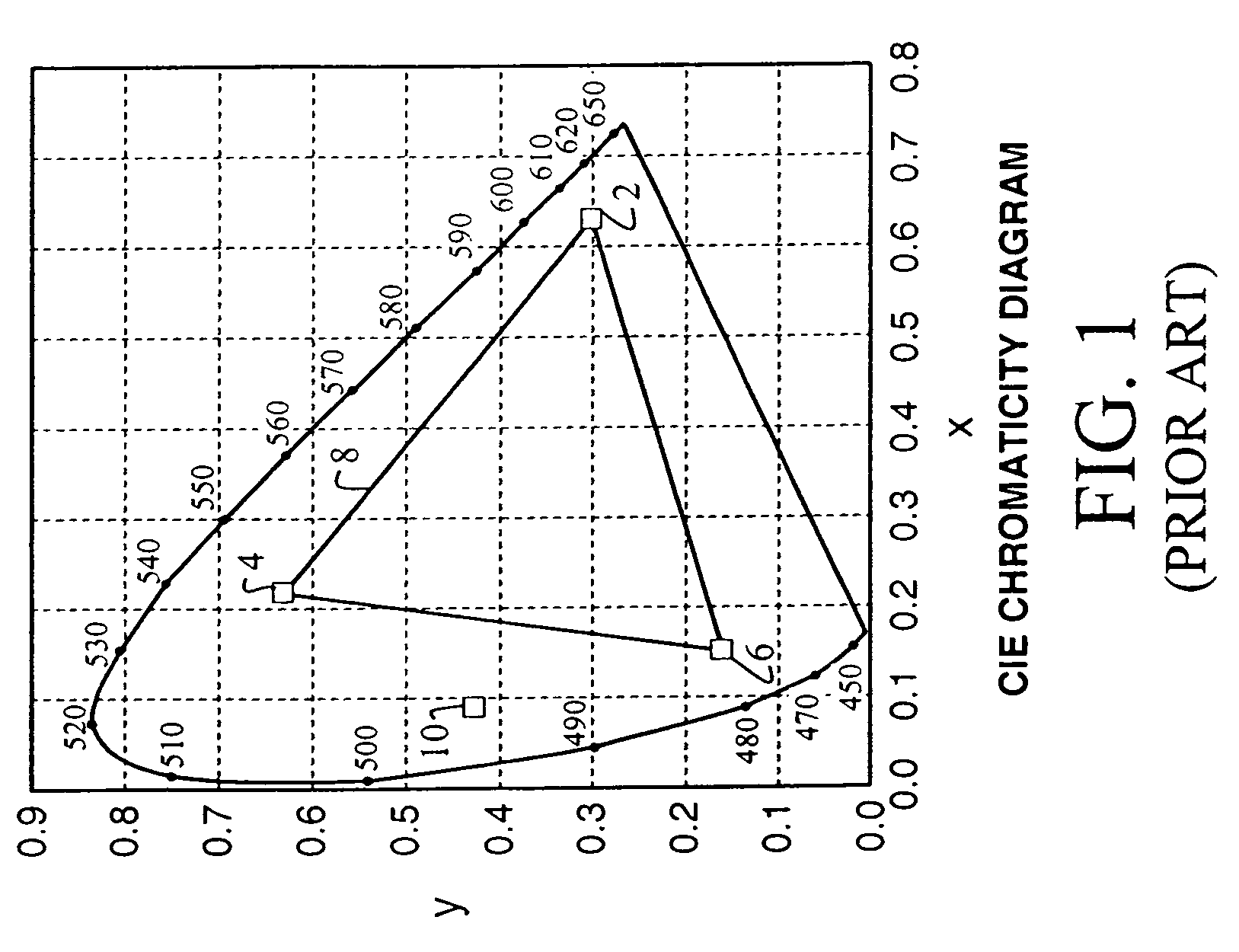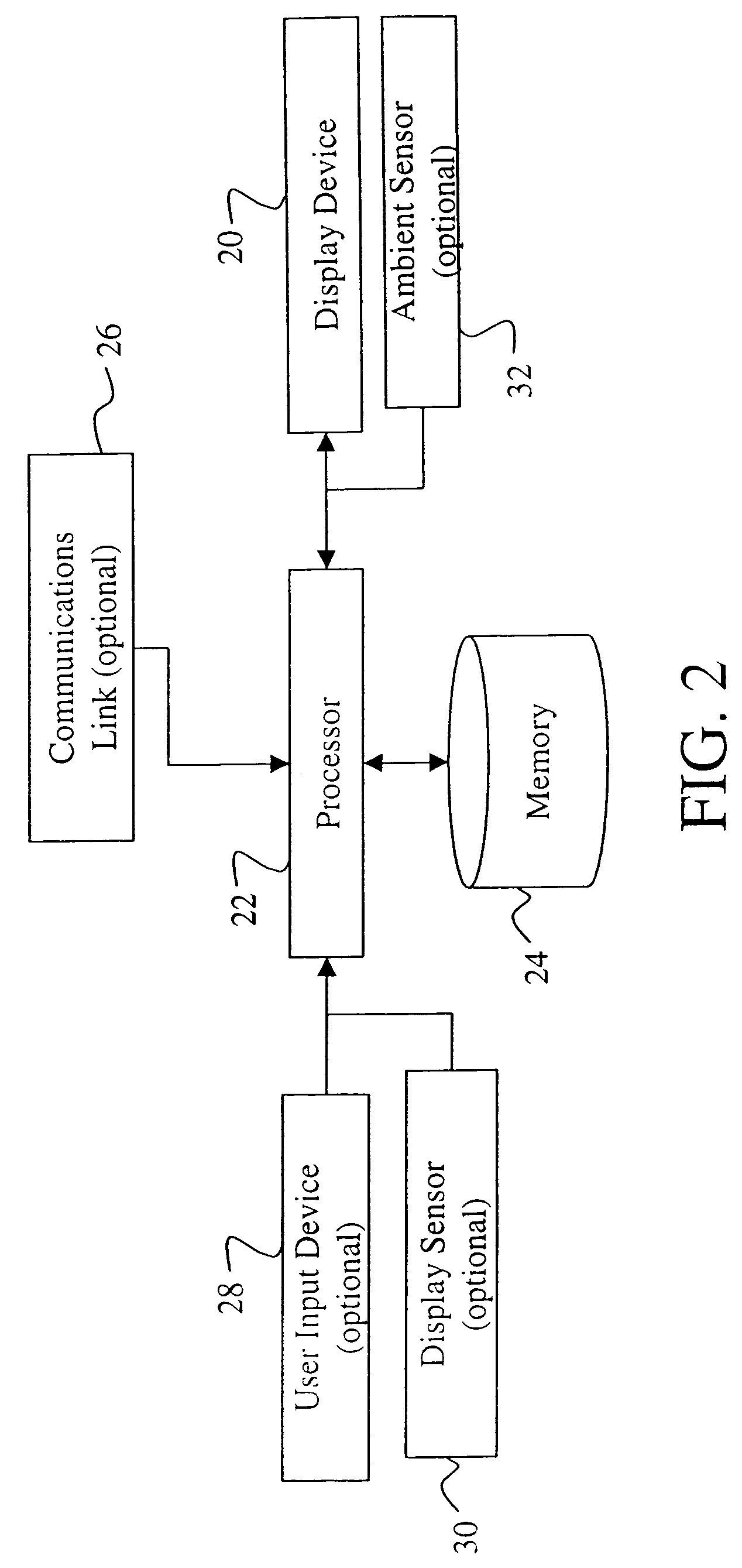Four color digital cinema system with extended color gamut and copy protection
a digital cinema and color gamut technology, applied in the field of display devices, can solve the problems of substantial revenue loss to the motion picture industry, contributing factor to revenue loss, and the questionable quality of movies pirated in this fashion does not prevent them from broad distribution
- Summary
- Abstract
- Description
- Claims
- Application Information
AI Technical Summary
Benefits of technology
Problems solved by technology
Method used
Image
Examples
Embodiment Construction
[0029] The present description is directed in particular to elements forming part of, or cooperating more directly with, apparatus in accordance with the invention. It is to be understood that elements not specifically shown or described may take various forms well known to those skilled in the art.
[0030] In the description and claims that follow, the term “invisible” or “substantially invisible” uses the conventional meaning, that is, not perceptible to the unaided human eye. In the context of the present invention, it will be understood that visual content that is intended to be invisible may be near or slightly above detectability limits for some observers. Similarly, the term “visually equivalent” describes multiple stimuli that appear the same to a normal human observer. In the context of the present invention, it will be understood that content that is intended to be visually equivalent may be near or slightly above detectability limits for some observers. Further, the term “...
PUM
 Login to View More
Login to View More Abstract
Description
Claims
Application Information
 Login to View More
Login to View More - R&D
- Intellectual Property
- Life Sciences
- Materials
- Tech Scout
- Unparalleled Data Quality
- Higher Quality Content
- 60% Fewer Hallucinations
Browse by: Latest US Patents, China's latest patents, Technical Efficacy Thesaurus, Application Domain, Technology Topic, Popular Technical Reports.
© 2025 PatSnap. All rights reserved.Legal|Privacy policy|Modern Slavery Act Transparency Statement|Sitemap|About US| Contact US: help@patsnap.com



